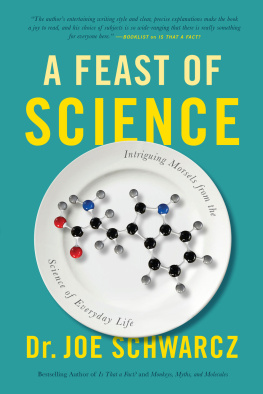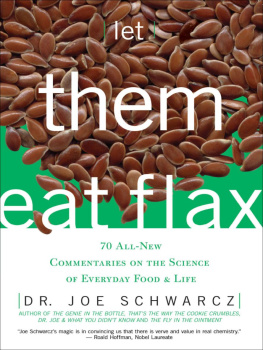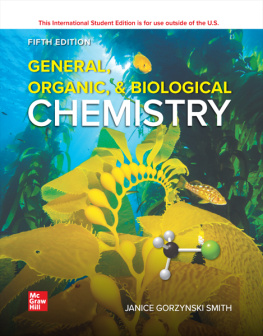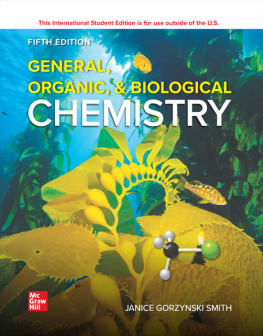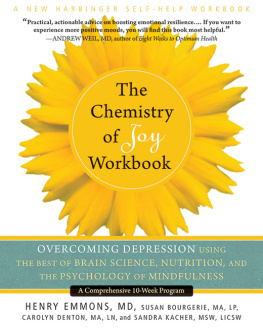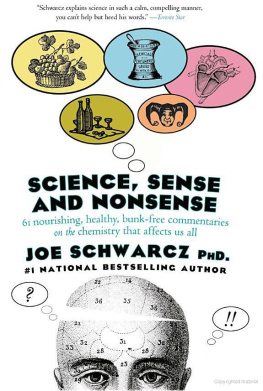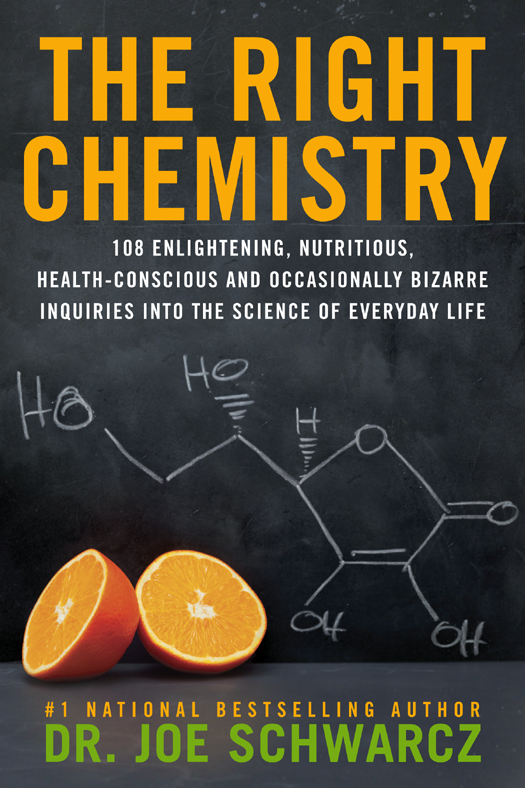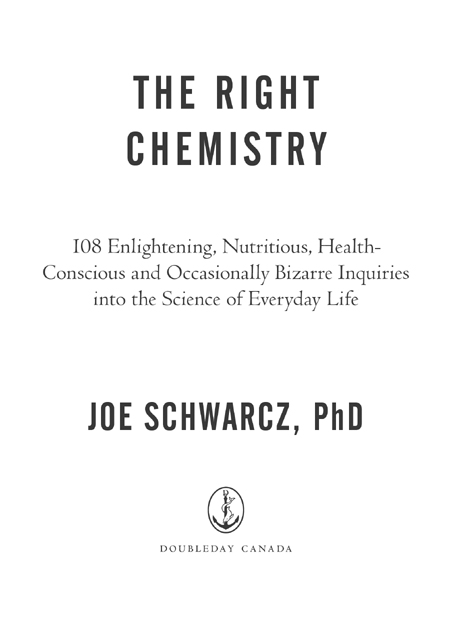Copyright 2012 Dr. Joe Schwarcz
All rights reserved. The use of any part of this publication, reproduced, transmitted in any form or by any means electronic, mechanical, photocopying, recording or otherwise, or stored in a retrieval system without the prior written consent of the publisheror in the case of photocopying or other reprographic copying, license from the Canadian Copyright Licensing Agencyis an infringement of the copyright law.
Doubleday Canada and colophon are registered trademarks
Library and Archives Canada Cataloguing in Publication
Schwarcz, Joe
The right chemistry / Joe Schwarcz.
eISBN: 978-0-385-67160-6
1. ChemistryPopular works. 2. ChemistryMiscellanea.
I. Title.
QD37.S38153 2012 540 C2012-902442-2
Cover image: Shawn Hempel | Dreamstime.com
Cover design: Andrew Roberts
Published in Canada by Doubleday Canada,
a division of Random House of Canada Limited
Visit Random House of Canada Limiteds website: www.randomhouse.ca
v3.1
CONTENTS
INTRODUCTION
I finally got my way. This books title is one I first pleaded for almost fifteen years ago when I wrote my first book. I was bothered by the negative image that chemistry had acquired and I wanted to set the record straight. My message then, as it is now, was that there are no safe or dangerous chemicals, only safe or dangerous ways to use them. To me, it was all about making the right decisions, knowing the right chemistry. And I also had in mind that people used this expression in a positive, albeit inappropriate fashion to describe the relationship between two people, or between players on a team.
To my dismay, I couldnt get publishers to bite. Including chemistry in the title is the kiss of death, they maintained. It was their view that people associate chemicals with toxins, and that for too many, chemistry brings back memories of a dreadful high school experience. So we came up with titles like Radar, Hula Hoopsand Playful Pigs; The Genie in the Bottle; Thats the Way the Cookie Crumbles; Dr. Joe and What You Didnt Know; The Fly in the Ointment; Let Them Eat Flax; An Apple a Day; Brain Fuel; Science, Sense and Nonsense; Dr. Joes Brain Sparks; and Dr. Joes Health Lab. In truth, all these books were about the right chemistry, which to me means using our knowledge of molecular behaviour to decipher chemical phenomena. And virtually everything in life comes down to chemical phenomena. The foods we eat, the medications we take, the cosmetics we apply, the energy we generate, the fabrics we wear, the plastics we use and the very workings of the human body surrender their mysteries to insightful chemical knowledge.
My intent is not to be an uncritical cheerleader for chemicals. After all, chemicals are nothing other than the inanimate building blocks of all matter. We are awash in some sixty million of them, the majority created by nature, a minority by chemists. Theyre not good or bad, not safe or dangerous. Their effect on us depends on how they are used, and what our exposure to them is. There is much debate about the impact of some chemicals on our lives, but about one issue there should be no debate: chemicals are interesting! So lets whet your appetite for learning about them with a few tantalizing morsels.
If youve ever battled moths or nasty household smells, youve probably met para-dichlorobenzene. A registered insecticide, it does away with moths very nicely. It can also do away with smells in urinals, either by masking the odour with its own strong smell or by preventing bacteria in stagnant urine from forming ammonia and other malodorous amines. Thats why it is a common ingredient in those urinal cakes that make for such inviting tinkle targets. Youll also find para-dichlorobenzene in various air fresheners. And since we breathe the air, youll find it in your blood. And what is it doing there? Probably not much good.
Para-dichlorobenzene is a known animal carcinogen and a suspected human one as well. Based on some elegant work using a tiny worm known as C. elegans, the suspicion is that this compound, as well as its chemical cousin naphthalene, can cause cancer by blocking apoptosis, a programmed process of cell suicide that occurs in all living organisms. Apoptosis is a sort of brake to prevent unchecked cellular proliferation, as happens in cancer. I wouldnt worry about peeing on a urinal cake, but Id rather not make a habit of sniffing para-dichlorobenzene elsewhere.
Now on to piperine, the compound responsible for the flavour of black pepper, the most widely used spice in the world. First cultivated in India some four thousand years ago, pepper became a much sought-after commodity because of its ability to counter the offensive odours and tastes that were common before effective food preservation techniques were introduced. In the sixteenth century, pepper was so valuable that dock workers in England were prohibited from wearing clothes with pockets or cuffs for fear that they would abscond with a few corns.
Americas first millionaire, Elias Derby of Salem, made his fortune by importing peppercorns and then used the money to endow Yale University. And now it is from Yale that we get a report of piperines potential role in breast cancer prevention. A combination of piperine and curcumin, a compound isolated from turmeric, when applied to cultured breast cancer cells in the lab, has the effect of decreasing the number of stem cells. Limiting stem cells limits the number of cells that have a potential to form tumours. Of course, such laboratory research rarely translates into effective practice when it comes to people, but the concept that cancer risk can be reduced with dietary compounds that have very low toxicity is an appealing one.
Acetone peroxide is, I hope, a chemical you wont encounter. Its an explosive, and a powerful one at that. It was used in the infamous London bombings in 1907 and was also the substance that Richard Reid, the shoe bomber, was trying to ignite to trigger an explosion that could have brought down an American Airlines flight in 2001. Luckily, Reid had been trudging around in rainy weather and the fuse in his shoe failed to ignite. He wont be getting another chance to experiment with explosives, seeing as hell be spending the rest of his life in jail. But you can thank Reid for having to remove your shoes when you go through airport security.
Unfortunately, acetone peroxide is not difficult to make, requiring only acetone, hydrogen peroxide, a strong acid and a modicum of chemical knowledge. A highly unstable compound, it readily decomposes with heat or impact into acetone vapour and ozone. Hundreds of litres of gas can be produced from a few hundred grams of solid material in a fraction of a second! The shock wave created by this rapid release of gases is what we term an explosion. Unlike most explosives, acetone peroxide contains no nitrogen, making it transparent to airport detection equipment that tests for nitrogen-based residues. No wonder that acetone peroxide has earned the nickname Mother of Satan.
Androstenone is not hard to find. All you have to do is raise your arms. Its right there in underarm sweat. And depending on your genetic makeup, you may or may not be able to sniff it. Roughly 25 per cent of the population cannot smell androstenone at all, 40 per cent think it smells like rotten wood or urine, while the rest find it to be a pleasing fragrance. Female pigs, on the other hand, are all sensitive to androstenone. Actually, more than just sensitive; if they are in heat and they smell androstenone, they will immediately assume a mating stance. Thats because androstenone is a pig pheromonein other words, a chemical that triggers a social response in another member of the same species.



